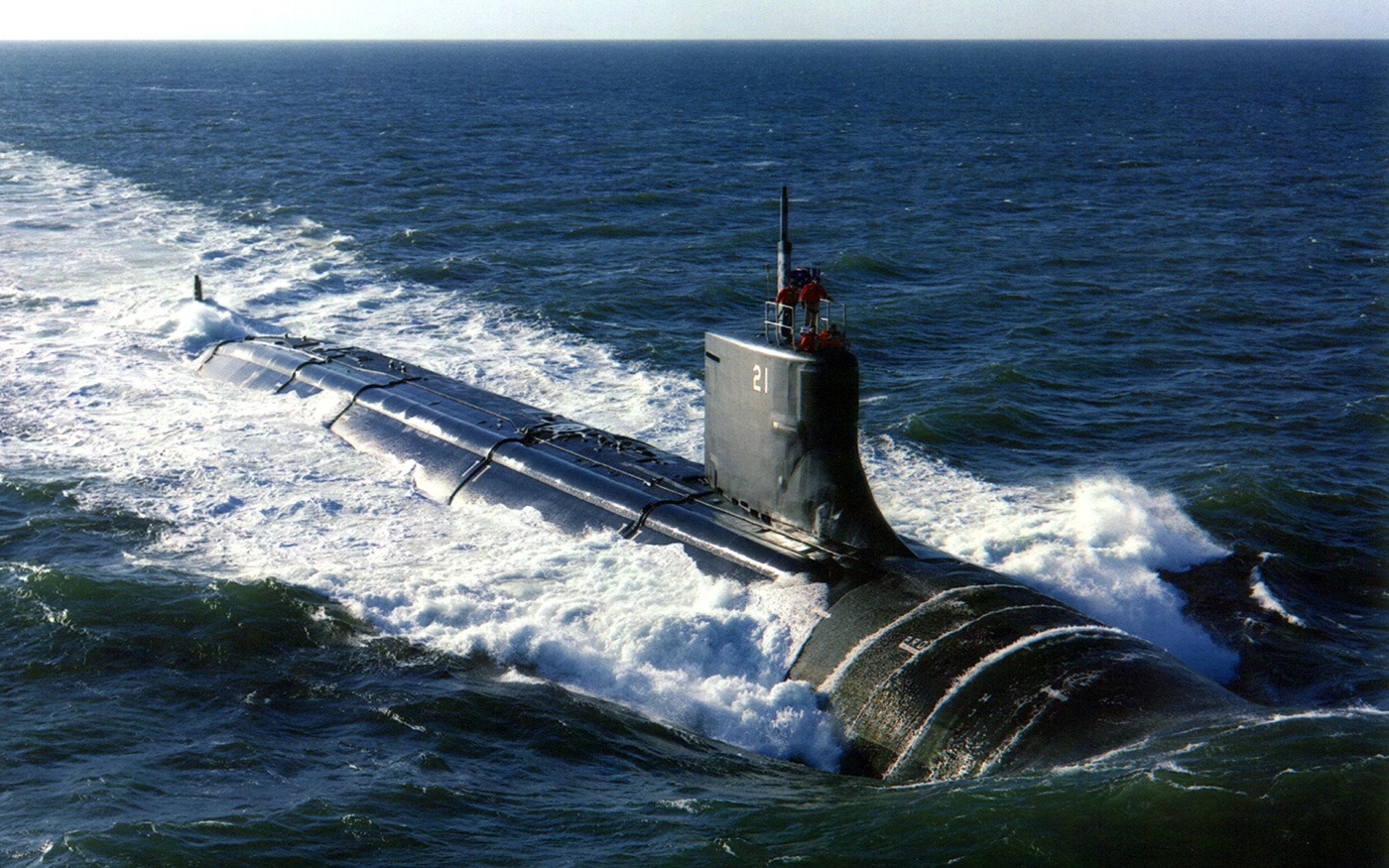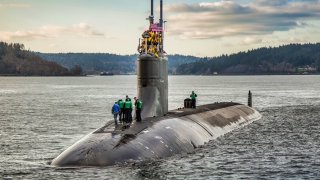Russia Freaked: Navy Surfaced Rare 'Stealth' Seawolf-Class Sub as Message
The U.S. Navy’s Seawolf-class submarines, developed during the Cold War, remain among the most advanced undersea warfare platforms. Though typically silent, these subs have occasionally surfaced as a show of force, such as the USS Seawolf's 2020 appearance off Norway's coast to deter Russian aggression.
Summary and Top Points: The U.S. Navy’s Seawolf-class submarines, developed during the Cold War, remain among the most advanced undersea warfare platforms. Though typically silent, these subs have occasionally surfaced as a show of force, such as the USS Seawolf's 2020 appearance off Norway's coast to deter Russian aggression.
-The Seawolf-class is equipped with advanced weaponry, including Mark 48 torpedoes and Tomahawk missiles.
Bottomline: Despite their covert nature, the Navy may continue to surface these submarines to reinforce NATO's deterrence strategy amidst ongoing tensions with Russia, reminding adversaries of their formidable capabilities.
The Seawolf-Class: Why These Submarines Are America's Secret Weapon Against Russia
The U.S. Navy’s Seawolf-class submarines, developed during the Cold War, remain among the most advanced undersea warfare platforms.
Though typically silent, these subs have occasionally surfaced as a show of force, such as the USS Seawolf's 2020 appearance off Norway's coast to deter Russian aggression.
The Seawolf-class is equipped with advanced weaponry, including Mark 48 torpedoes and Tomahawk missiles.
Despite their covert nature, the Navy may continue to surface these submarines to reinforce NATO's deterrence strategy amidst ongoing tensions with Russia, reminding adversaries of their formidable capabilities.
As tensions continue in Ukraine, the U.S. may use similar displays to reinforce NATO's deterrence strategy.
Why the Seawolf-Class Has to Surface Sometimes
Designed at the tail end of the Cold War, the U.S. Navy’s Seawolf-class submarines were built to surpass the capabilities of their Soviet counterparts.
While budgetary constraints and the collapse of the USSR led to the cancellation of the full planned fleet of vessels, the three Seawolf ships constructed continue to wow naval experts and scare U.S. adversaries. In fact, the Navy’s Seawolf ships carry some of the most sophisticated undersea warfare technology ever developed.
Although submarines usually remain silent and stealthy, in order to demonstrate their ability to strike from any corner of the world, the Navy has intentionally surfaced them as a show of force to adversaries.
In 2020, the service made public displays of its nuclear submarines in Norway in an effort to deter Russian hostility in the region. On Aug. 21, 2020, USS Seawolf parked off the coast of Tromso to take on new crew members. The U.S. and Norway use this strategic port off the coast of Tromso to keep an eye on Moscow’s Northern Fleet. According to senior naval officials, “the U.S. and Norway have a great relationship, and our ability to use facilities in and around Tromso would provide a strategic location for our visits,” adding that “It would give us flexibility for not only the U.S. but allied countries to exercise in the High North.”
Introducing the Seawolf-Class
USS Seawolf, like its two sister ships, was developed in the late Cold War. The Navy required a new sub class capable of countering the USSR’s Typhoon class of ballistic missile submarines. Engineers designed the Seawolf ships to be quieter and faster than their predecessors. The lead ship of the class, USS Seawolf, was ordered in 1989 from the Electric Boat Division of General Dynamics. USS Connecticut was commissioned a decade later, followed by USS Jimmy Carter in 2004.
In 2021, Connecticut was severely damaged after colliding with a seamount while sailing in the South China Sea. Fortunately, no sailors were killed in the incident, but the submarine has remained out of commission since this mishap. The Navy expects to return Connecticut to service in 2025.
USS Jimmy Carter was developed with distinct modifications, making the submarine essentially a new class when compared to its two sister ships. The Navy uniquely designed Jimmy Carter for covert surveillance and special operations missions.
According to Business Insider, Jimmy Carter included “special thrusters fore and aft that allow the sub to remain stationary underwater, as well as a 100-ft hull extension known as the Multi-Mission Platform, which increased its length to 435 feet and its fully submerged displacement 12,158 tons.” Jimmy Carter can float above undersea communications cables and physically cut into them, which enables the submarine to intercept the data streams running through them.
Basic Specs and Capabilities for the Seawolf-Class
The Navy’s Seawolf-class ships are typically armed with 533mm Mark 48 torpedoes, in addition to Harpoon anti-ship missiles and Tomahawk cruise missiles. A Tercom-Aided Inertial Navigation System guides each missile toward its intended target. While the Tomahawk can be fitted with a nuclear warhead, these submarines rarely carry these types of munitions.

As detailed by Naval Technology, “Block III improvements include an improved propulsion system and Navstar global positioning system (GPS) guidance capability. The anti-ship Tomahawk missile is equipped with inertial guidance and an active radar and anti-radiation homing head. The range is up to 450km.”
Could the Navy Surface Its Seawolf-Class Submarines in the Future?
As Russia’s invasion of Ukraine rages on, the U.S. and its NATO allies are constantly working to deter additional hostilities in the region. Showcasing the strength and capability of the U.S. submarine fleet via surprise surfacing missions could remind the Kremlin of the consequences of extending the war further.
About the Author: Maya Carlin, Defense Expert
Maya Carlin, National Security Writer with The National Interest, is an analyst with the Center for Security Policy and a former Anna Sobol Levy Fellow at IDC Herzliya in Israel. She has by-lines in many publications, including The National Interest, Jerusalem Post, and Times of Israel. You can follow her on Twitter: @MayaCarlin.
All images are Creative Commons.


